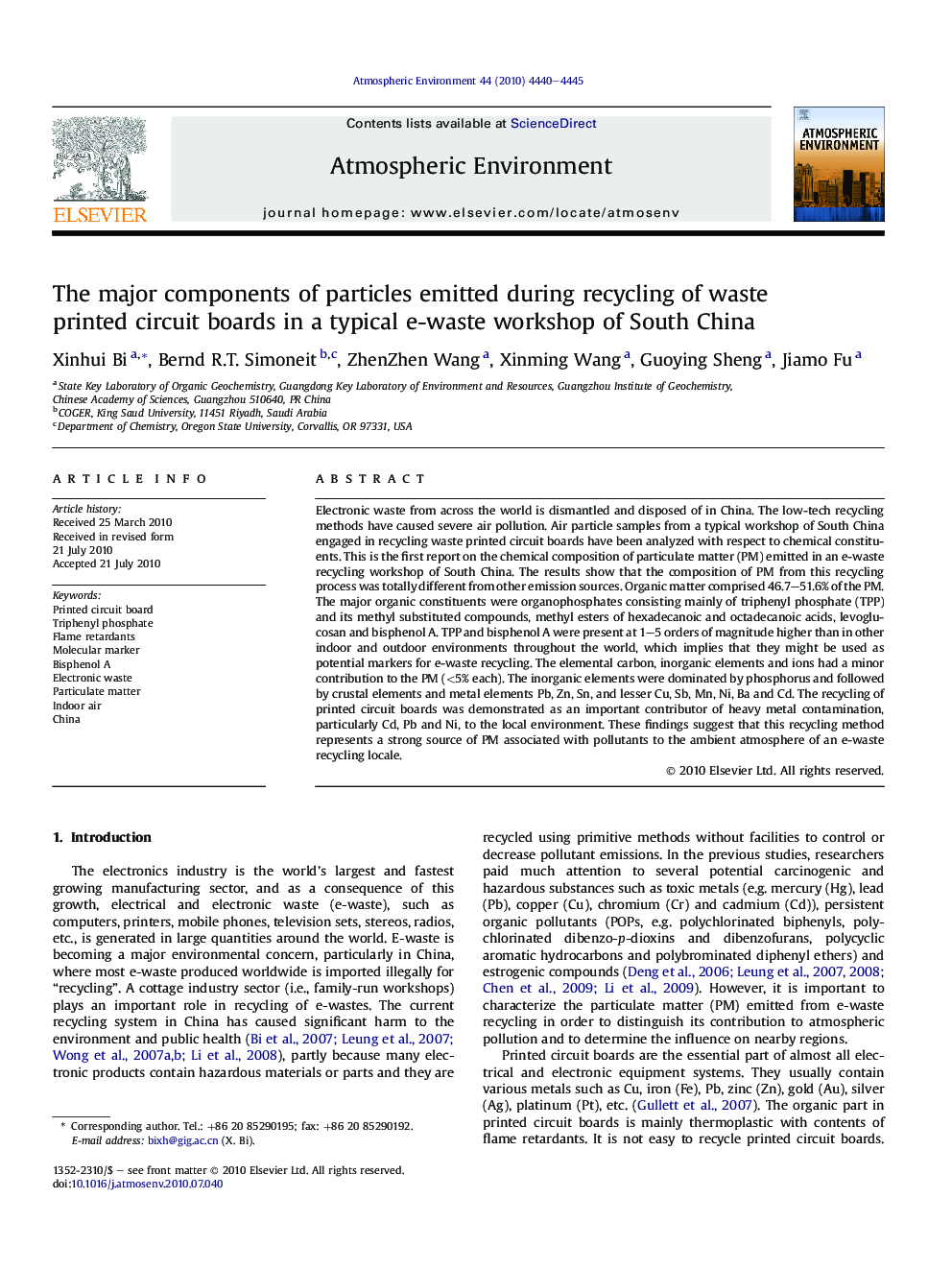| Article ID | Journal | Published Year | Pages | File Type |
|---|---|---|---|---|
| 4440425 | Atmospheric Environment | 2010 | 6 Pages |
Electronic waste from across the world is dismantled and disposed of in China. The low-tech recycling methods have caused severe air pollution. Air particle samples from a typical workshop of South China engaged in recycling waste printed circuit boards have been analyzed with respect to chemical constituents. This is the first report on the chemical composition of particulate matter (PM) emitted in an e-waste recycling workshop of South China. The results show that the composition of PM from this recycling process was totally different from other emission sources. Organic matter comprised 46.7–51.6% of the PM. The major organic constituents were organophosphates consisting mainly of triphenyl phosphate (TPP) and its methyl substituted compounds, methyl esters of hexadecanoic and octadecanoic acids, levoglucosan and bisphenol A. TPP and bisphenol A were present at 1–5 orders of magnitude higher than in other indoor and outdoor environments throughout the world, which implies that they might be used as potential markers for e-waste recycling. The elemental carbon, inorganic elements and ions had a minor contribution to the PM (<5% each). The inorganic elements were dominated by phosphorus and followed by crustal elements and metal elements Pb, Zn, Sn, and lesser Cu, Sb, Mn, Ni, Ba and Cd. The recycling of printed circuit boards was demonstrated as an important contributor of heavy metal contamination, particularly Cd, Pb and Ni, to the local environment. These findings suggest that this recycling method represents a strong source of PM associated with pollutants to the ambient atmosphere of an e-waste recycling locale.
